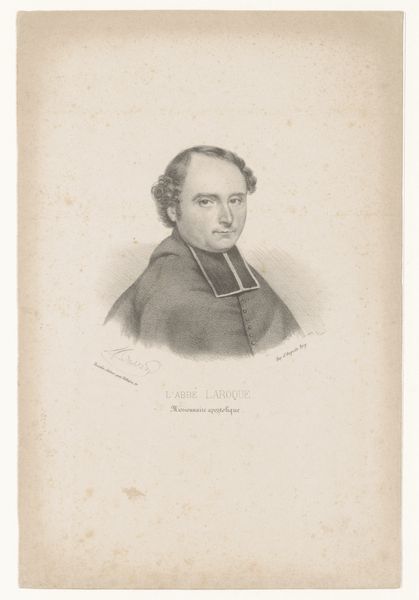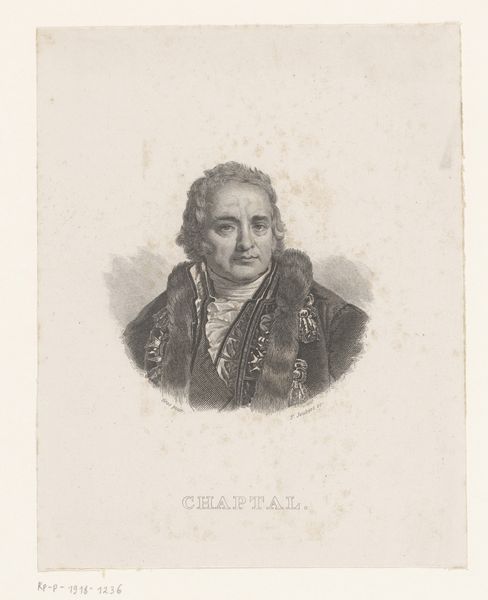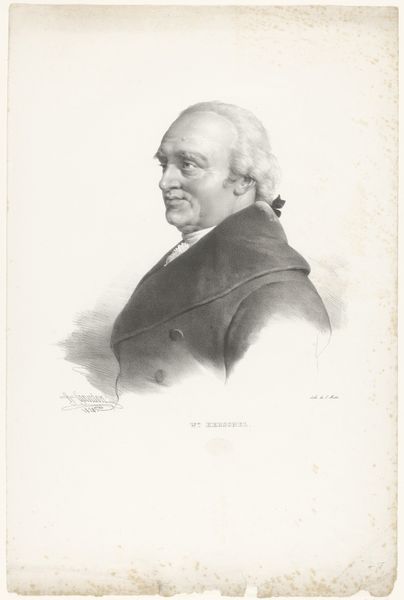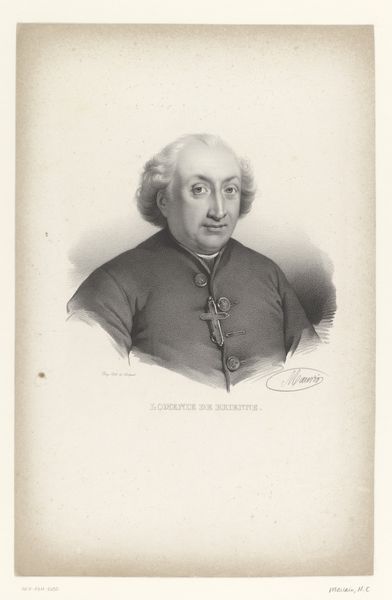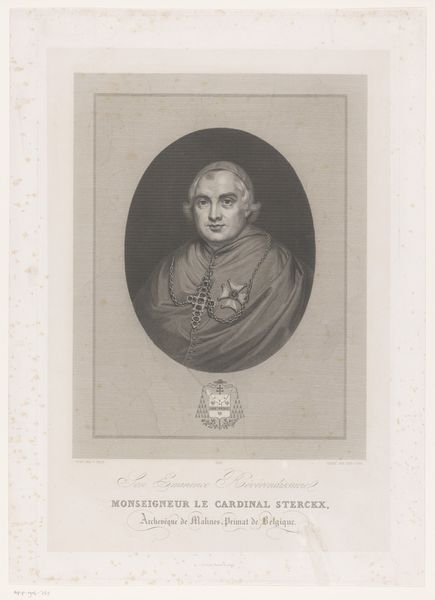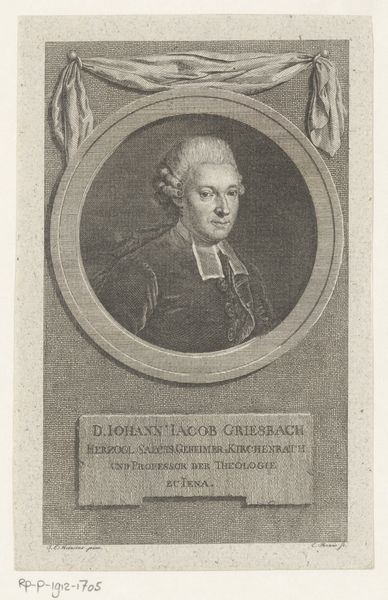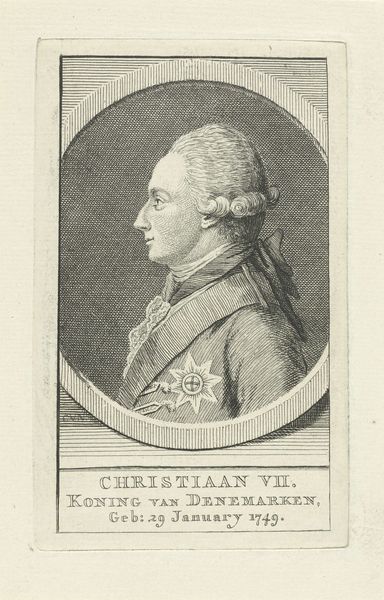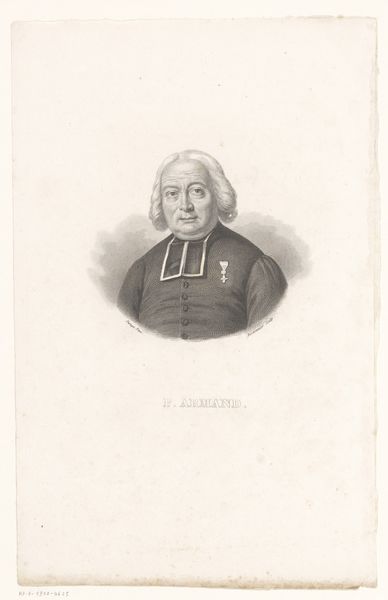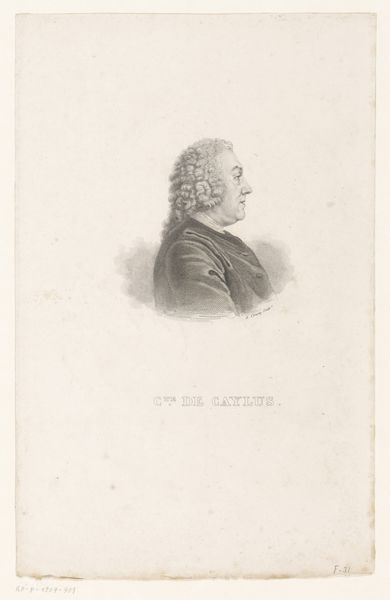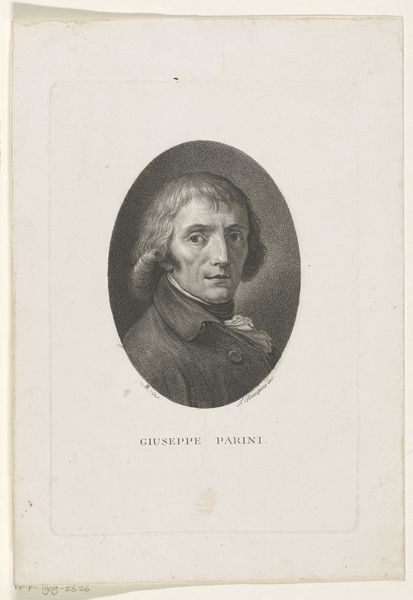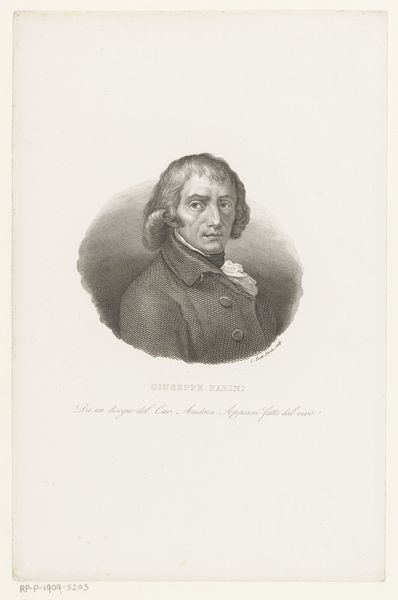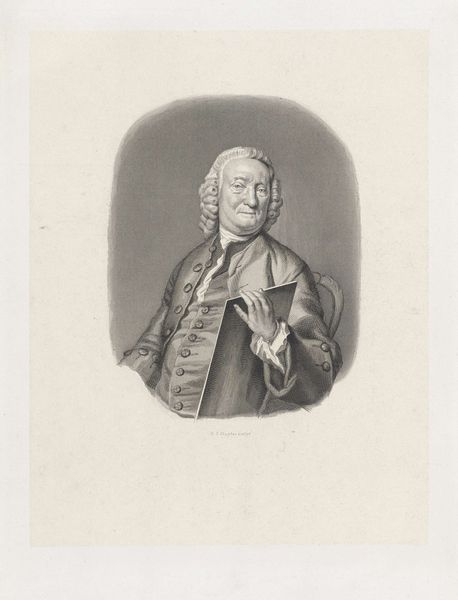
drawing, pencil
#
portrait
#
drawing
#
neoclacissism
#
pencil drawing
#
pencil
#
academic-art
Dimensions: height 95 mm, width 76 mm
Copyright: Rijks Museum: Open Domain
Curator: Looking at this piece, one is immediately struck by the man's penetrating gaze. This is a pencil drawing titled "Portret van Louise de La Vallière" by Jean Bein, dating from 1799 to 1857. It's currently held in the Rijksmuseum's collection. Editor: There's a certain austerity to it, isn’t there? The medium, pencil, lends itself to that I suppose. The shading around the subject seems quite subdued, almost somber. The figure looks self-assured and ready to fight for his right, not quite pious in expression. I think. Curator: That somber quality, as you say, speaks to the sitter's socio-political context. Religious figures during that era were constantly renegotiating their roles in increasingly secular societies. The subject matter itself can be analyzed in terms of how figures are represented in terms of gender and status and how the religious figures were presented. Editor: True, but consider how Bein employs neoclassicism in his portrayal. Note the idealized facial features, the deliberate simplicity. Think about the academic art, that also focused to some degree on making religious figures closer to the “audiences” of the churches and bringing the figure to humanity and equality. This is, of course, filtered through the lens of portraiture intended to project power. How does this imagery either subvert or support systems of power? Curator: It's that tension that’s so intriguing isn't it? The artist uses that refined style to present the sitter in a certain light. It also gives certain agency to those, often not rich figures who wish to present a “good face” as this becomes affordable even without the colors that rich figure may obtain from paints, but with monochrome materials of the pen. But it's impossible to separate these artistic choices from the complex politics and class dynamics of the time. I wonder what kind of patronage or influence this man sought when he requested to do that piece. Editor: Absolutely. This piece really underlines how crucial it is to examine both the aesthetic and socio-political dimensions to extract the complete meaning that informs us on its historic setting and what followed after. Curator: And that interweaving, I feel, opens up richer pathways towards understanding the drawing within these institutional walls.
Comments
No comments
Be the first to comment and join the conversation on the ultimate creative platform.
